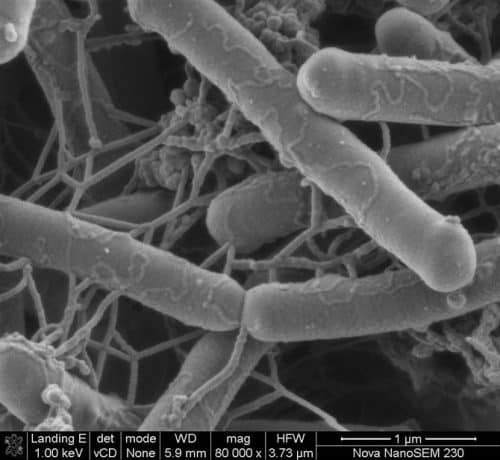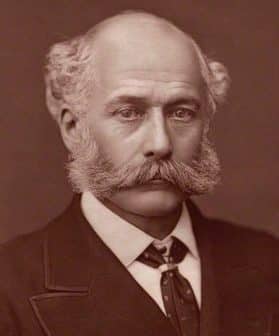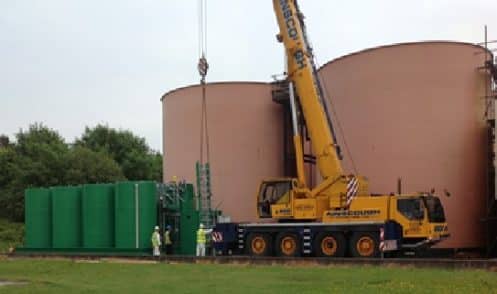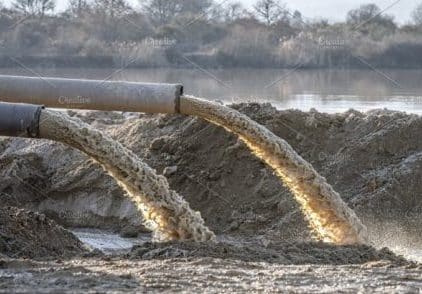A bug’s life: a route to sustainability
9 Jun 2021|Ian Thompson
- Research
The Covid pandemic has unfortunately reinforced the view of that microorganisms (we normally include viruses, bacteria, fungi and algae) are a thorough nuisance with the potential to kill us all. Of course, there is also historic evidence to support this view. It is estimated that bubonic plague killed between 30-60% of the European population between 1347-1351 which in this case was caused by a bacterium (Yersinia pestis).
However, the negative side of microbial life is only part the story, and it is too easy to dismiss half the living biomass on the planet, which microbes constitute, as problematic. The microbial kingdom is vast not only in terms cell numbers but the diversity of forms, which is astonishing. Take for instance the microbial diversity of a garden soil which typically contains a 100 million individual cells, and within this community a million different genetic types. We estimate the human body harbours at least 10 times the number of bacterial cells than human, and by far the vast majority of these play vital roles in terms of maintaining good health. This includes the digestive systems and maintaining a healthy skin, and even more recent discoveries suggesting that human gut microorganisms play vital roles in determining our weight, mood and even mental health. Indeed, median advertisers are educating us in promoting probiotic yogurt by referring to ‘good’ and ‘bad’ bacteria.

In fact, humans have exploited the pleasures and benefits of microbial products such as wine, bread and cheese for thousands of years, not knowing the underlying process is microbial. With the introduction of penicillin in the 1940’s and other antibiotics since, we have increased our reliance on microbial products and their beneficial processes. With the driver now to reduce our carbon foot-print and make the way we live more sustainable, there is increasing realisation that microbial life could provide solutions to some of the problems that face us today. These include clean energy, pollution prevention and remediation, wastewater recycling, and antibiotic resistance. These are the issue my research group, which is based in the Engineering Department, is focused on.
It might be a surprise that someone who trained and worked for years in microbial ecology, which is the study of microorganisms in their natural environment, has establish a research group in Engineering Science. It’s not so strange in fact. I spent many years investigating the diversity and habits of bacteria responsible for keeping soils healthy, such as converting dead plant material into nutrients for new growth. I then moved on to examine the ecology of microbial communities in soils contaminated by very toxic pollutants such as mustard gas and wastewaters generated from engineering workshops. In the process we employed a range of increasingly sensitive and sophisticated methods combining microscopy, chemistry and DNA based technologies. This powerful combination enabled us to determine how exposed communities respond to man-made contaminants. Importantly they now enable us to identify and specifically isolate those individual cells and degrade the contaminant rendering them inert or less toxic. The ability to specifically identify just 10’s of individuals able to degrade a contaminant in a background of maybe 10 million cells that cannot, reflects the massive advances the field has made in the past 30 years.

So, we have become very good at looking down microscopes and examining test-tubes to identify the right bacteria that will undertake beneficial process such as neutralising contaminants or generation of biodegradable bioplastics from waste. What microbiologists are not so good at is delivering their solutions at large scale. Hence my move to Engineering. Engineers are focused on solving problems and importantly making them robust, reliable and workable at scale. The potential role of engineering in assisting in large scale microbiological issues is not new. Joseph Bazalgette as Chief engineering of London Metropolitan Board of Works, in response to the Great Stink of 1858, created the sewer network instrumental in relieving the city from cholera epidemics and cleaning up the Thames. The wastewater systems he developed have become the blue-print copied around the world and which has saved millions of lives. A vital aspect of Bazalgette’s solution was keeping the microorganism present in human waste (faeces) separate from drinking water and exploiting them in separated sewage treatment systems. By providing the confined microorganisms the right conditions they eat the waste, converting it in many cases to clean sustainable energy (methane) and in the process enabling the decontaminated water to be recycled or introduced back into the waterways.
So, in essence our research follows similar lines. We identify specific bacterial types that can do beneficial tasks, isolate them, and determine what conditions they need to make them thrive and drive a process such as oil clean-up or waste conversion to biogas.
However, sometimes the waste is so toxic or simply too unpalatable that we need to devise engineered solutions to help the microbial degradation process. One novel way we have pioneered is the application of ultrasound to stimulate microbial activity. Another method is to introduce low levels of electricity into the soil to help move the contaminants and microbial cells closer together and in the process increasing microbial activity by warming the soil. The key parameter we always look for in finding ways of harnessing and stimulating beneficial microbial process is that we can use them in the field, at large scale often in remote regions of the world where infrastructure is limited or non-existent. Scale is vital since the challenges, we are focus on such as waste recycling, environmental clean-up, carbon capture and water treatment are massive global problems.


Category: Research
Author

Ian
Thompson
Ian Thompson trained as an environmental microbiologist at the University of Essex and after Research Assistant posts in the Universities of East Anglia and Kent moved to Oxford in 1989. Until 2007 he was Head of Environmental Biotechnology at the NERC Centre for Ecology & Hydrology (CEH), Oxford. In 2007 he was seconded to the University Begbroke Directorate where he has established his current research laboratory. In 2008 he was made Professor of Engineering Science, Department of Engineering Science and NERC CEH Fellow.